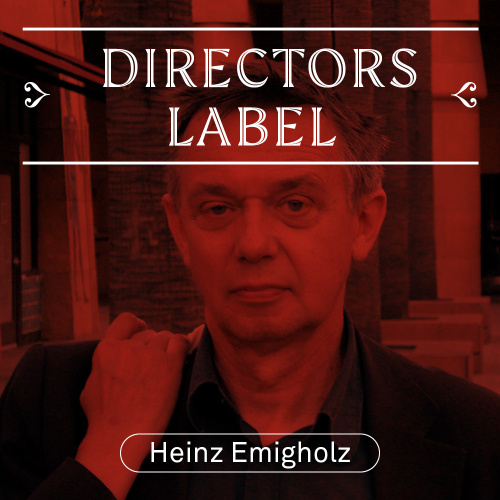
Dieste [Uruguay]
GER 2017, 95 min
A cinematic documentation of 29 buildings by the Uruguayan architect and shell-construction master Eladio Dieste (1917-2000). As prologue, three buildings by Julio Vilamajó in Montevideo. As appendix, buildings by Eladio Dieste in Spain.
Synopsis
Eladio Dieste’s innovations and alternative construction methods were for a long time more efficient than conventional methods and made it possible to build large spans in a manner never seen before. Today he is regarded as an outstanding construction-engineering artist. His writings on architecture and construction and his ideas on creating form and on the relationship between architecture and art establish him as a profound thinker on social architectonic practice. DIESTE [Uruguay] documents 29 buildings by the Uruguayan architect and shell-construction master.
DIESTE [Uruguay] is part of Heinz Emigholz’ STREETSCAPES-series, which also includes 2+2=22 [The Alphabet], BICKELS [Socialism] and STREETSCAPES [Dialogue].
Streaming-Info
Rent or buy the movie on our Vimeo channel.
Language: No dialogue
Film kaufen
VOD
451-Vimeo
DVD
451-Alive Shop
amazon
Awards and Festivals
- Berlinale Forum, 2017
- Hong Kong International Film Festival, 2017
- BAFICI Buenos Aires Festival Internacional de Cine Independiente, 2017
- IndieLisboa International Film Festival, 2017
- Tag der Architektur – Wiesbadener Festtage, 2017
- Milano Design Film Festival, 2017
- Viennale – Vienna International Film Festival, 2017
- Heinz Emigholz Retrospektive im Stadtkino Basel, 2017
- Human Rights Festival Zagreb, 2017
- Copenhagen Architecture Festival, 2018
- BOZAR Cinema Brussels, 2018
- Metakino Festival Helsinki, 2019
- Copenhagen Architecture Festival, 2024
Additional Texts
Eladio Dieste
Eladio Dieste was born in Artigas, Uruguay in 1917. In 1943, he graduated as a construction engineer from the University of Montevideo. He and his wife Elizabeth Friedheim, a German-Jewish immigrant, had twelve children. Starting in 1945, he taught at the Department of Engineering at the University of Montevideo. He gathered practical experience in bridge building and as an architect for various companies. In 1946, Dieste built the first reinforced brick shell for the architect Antoni Bonet in Maldonado. A spectacular load test proved that reinforced, double-curved brick shells are stronger than reinforced concrete. In 1956, Dieste and his former fellow student Eugenio Montañez founded a company that further developed this construction method and used it for most of his constructions. He led a group of masons, concrete workers, and ceramicists whose great craftsmanship made it possible to carry out this new construction technique. Eladio Dieste’s innovations and alternative construction methods were more efficient than conventional methods for a long time and made it possible to build large spans in a manner never seen before. Today he is regarded as an outstanding construction-engineering artist comparable to Eugène Freyssinet, Robert Maillart and Heinz Isler. His writings on architecture and construction and his ideas on creating form and on the relationship between architecture and art establish him as a profound thinker on social architectonic practice. Dieste died in 2000 in Montevideo.
The opposite of negligence
In order for something to truly reach modest people it must have a lightness, a mysterious ease, a concise simplicity, something like dance without effort or fatigue. It does not satisfy them, and they are right not to be satisfied, when a difficulty is resolved using blind force or money. They want the problem to be solved with the same effortlessness with which the sparrow hawk stays aloft and each flower in the field, when we really see them, is the center of a mysterious landscape and “not even Solomon, in all his glory, was dressed like one of them” (Matthäus 6:28,29). To perceive something in this way shows a penetration that is as delicate as the sweetness that the coarsest hands acquire when they caress the head of a child.
For those who are suspicious of anything that has an emotional charge, I want to clarify something. Like all human deeds that are dense with emotional force, what I have depicted above comes at the end of a rationally well-anchored chain of events. Behind the resolution of a problem that employs blind force and money, there is always the negligence, and behind the negligence there is the disdain or thoughtlessness and superficiality (which are other forms of disdain) of he who does not examine himself. This disdain is definetely contempt for human effort or of mankind itself; here, I think we have touched a common basis, something that we all agree on – the value of mankind. The grace that we demand from art is a flower of effort and energy, which is the opposite of negligence.
(Eladio Dieste: “Art, People. Technocracy”, in Stanford Anderson (ed.): Eladio Dieste: Innovation in Structural Art, Princeton: Princeton Architectural Press, 2004, 194-198)
Watch Movie
VOD
451-Vimeo
DVD
451-Alive Shop
amazon
Credits
Director and Screenplay
Heinz Emigholz
Director of Photography and Editor
Heinz Emigholz, Till Beckmann
Assistant Camera
Manja Ebert, Nacho Rodríguez
Original Sound
Markus Ruff
Sound Design
Christian Obermaier, Jochen Jezussek
Sound Mixer
Jochen Jezussek
Postproduction
Till Beckmann
Productionservice Uruguay
Micaela Solé, Cordón Films
Production Management
Patricia Olveira, Markus Ruff
Producers
Frieder Schlaich, Irene von Alberti
Produced by
Filmgalerie 451
DVD-Details
Extras
3 short films by Heinz Emigholz: TWO BASILICAS (36 min), LE CORBUSIER [|||||] ASGER JORN [RELIEF] (29 min), TWO MUSEUMS (18 min) – international versions (no dialogue), Chapter Navigation, Presskit, Trailer
Language
International Version (no dialogue)
Country Code
Code-free
System
PAL / Color
Length
95 min + 83 min Extras
Aspect Ratio
16:9
Sound Format
DD 5.1 + 2.0
Set Content
Softbox (Set Content: 2)
Release Date
30.11.2018
Rating
Info-Programm gemäß §14 JuSchG
Distribution Details
Screening Format
DCP (2K & 4K, 25 fps, 5.1)
Blu-ray Disc
Aspect Ratio
Digital, 1.77 (1920 x 1080p)
Language
International Version (no dialogue)
Promotion Material
Trailer, A1-Poster
License Area
Worldwide
Rating
Info-Programm gemäß §14 JuSchG









